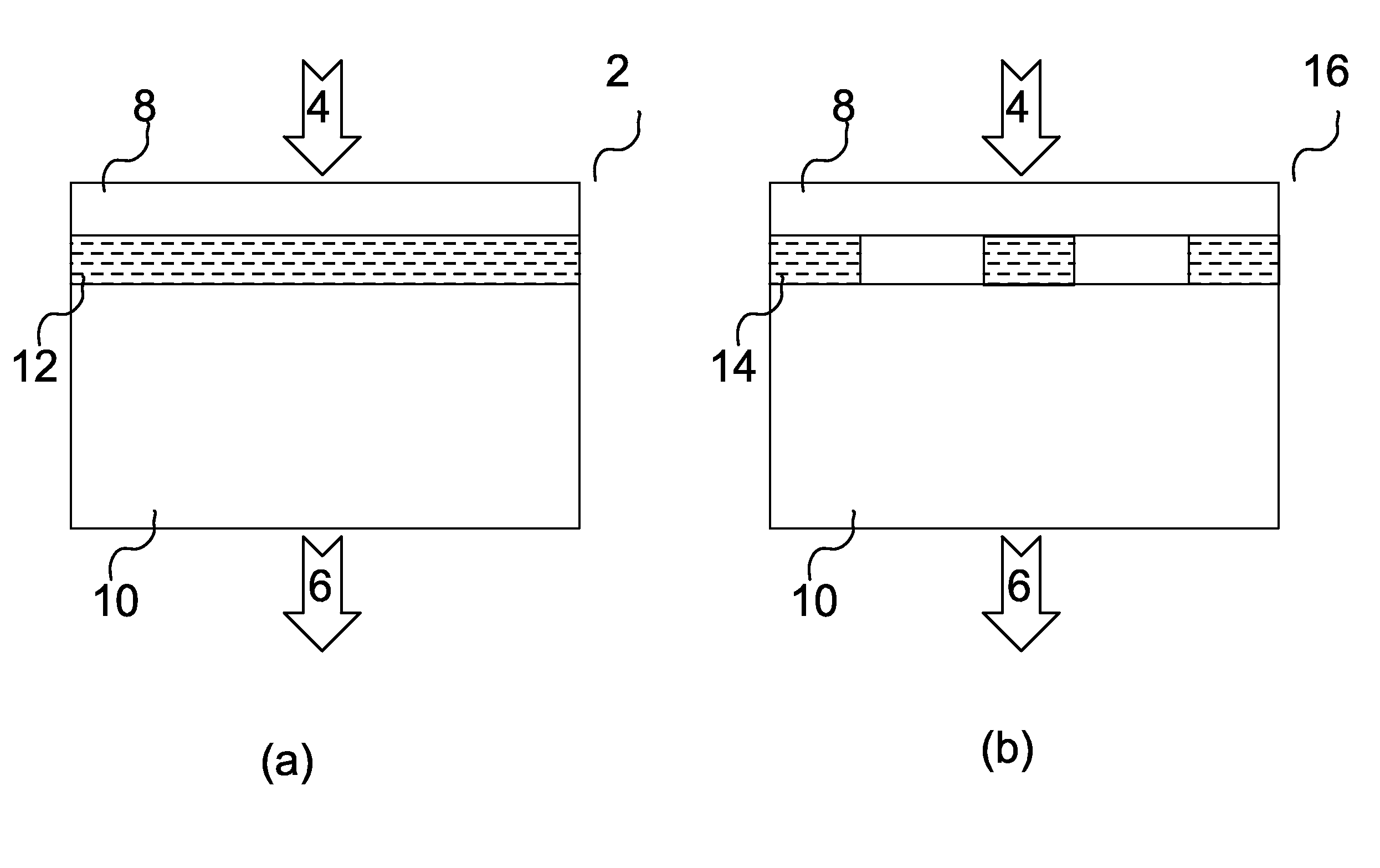Reflective Optical Limiter
a technology of optical limiters and reflectors, applied in non-linear optics, instruments, optics, etc., can solve the problems of no longer focused beams, increased energy propagation, and thermal blooming, and achieve the effect of reducing the threshold radiation
- Summary
- Abstract
- Description
- Claims
- Application Information
AI Technical Summary
Benefits of technology
Problems solved by technology
Method used
Image
Examples
Embodiment Construction
[0045]Although the invention will be described in connection with certain preferred embodiments, it will be understood that the invention is not limited to those particular embodiments. On the contrary, the invention is intended to cover all alternatives, modifications, and equivalent arrangements as may be included within the spirit and scope of the invention as defined by the appended claims.
[0046]FIG. 1(a) shows a schematic view of an optical limiter 2 having a layer of phase changing material 12 placed between a glass backing 10 and a glass cover 8. The phase changing material 12 is a transparent matrix; having embedded particles of a material that changes its optical properties due to a phase change of the embedded particles. When light 4 impinges on the limiter 2 it passes through the transparent cover 8 and is partially absorbed in layer 12, either in the matrix or in the particles. The rise in temperature, due to light absorption, affects the phase of the embedded particles,...
PUM
| Property | Measurement | Unit |
|---|---|---|
| size | aaaaa | aaaaa |
| insertion loss | aaaaa | aaaaa |
| thickness | aaaaa | aaaaa |
Abstract
Description
Claims
Application Information
 Login to View More
Login to View More - R&D
- Intellectual Property
- Life Sciences
- Materials
- Tech Scout
- Unparalleled Data Quality
- Higher Quality Content
- 60% Fewer Hallucinations
Browse by: Latest US Patents, China's latest patents, Technical Efficacy Thesaurus, Application Domain, Technology Topic, Popular Technical Reports.
© 2025 PatSnap. All rights reserved.Legal|Privacy policy|Modern Slavery Act Transparency Statement|Sitemap|About US| Contact US: help@patsnap.com



